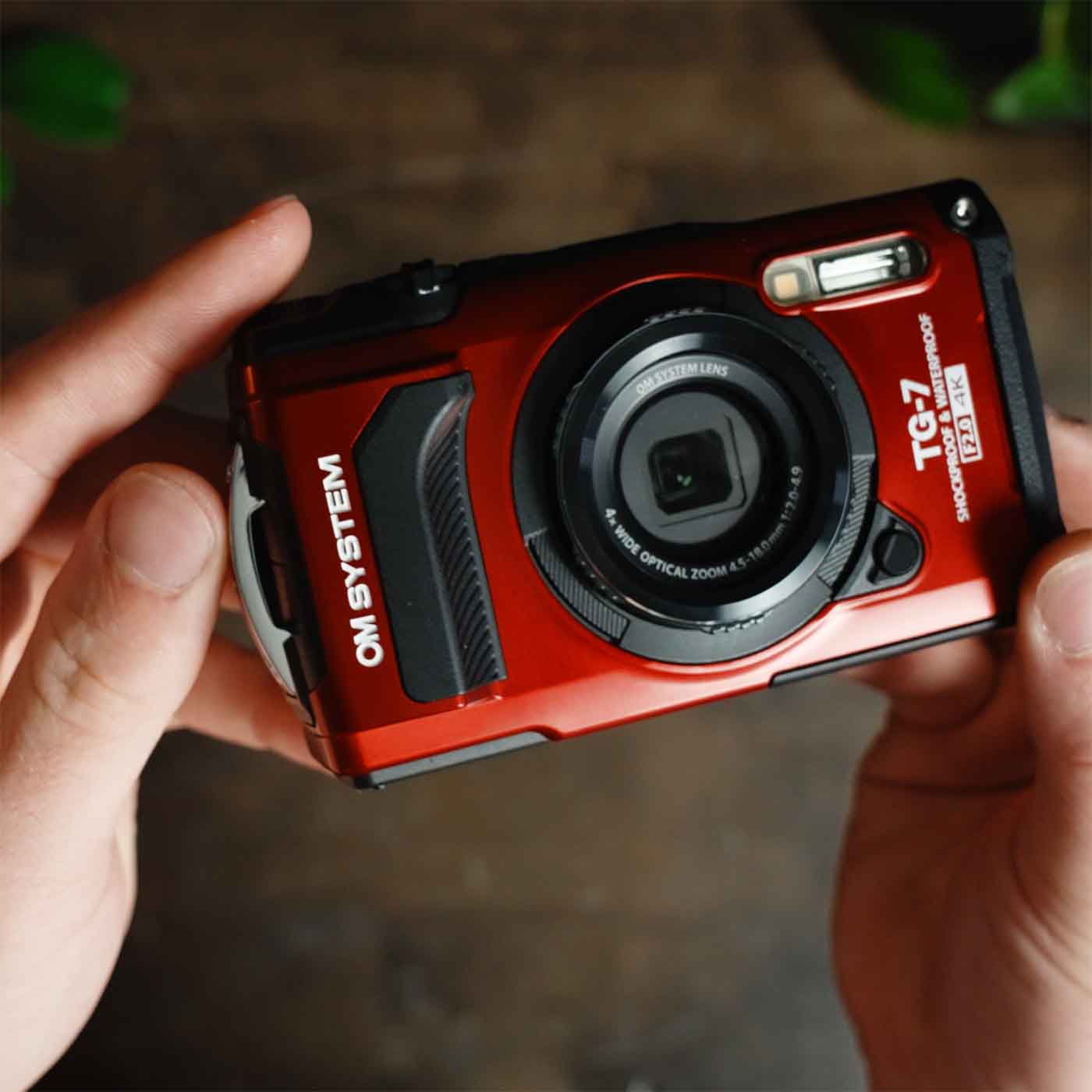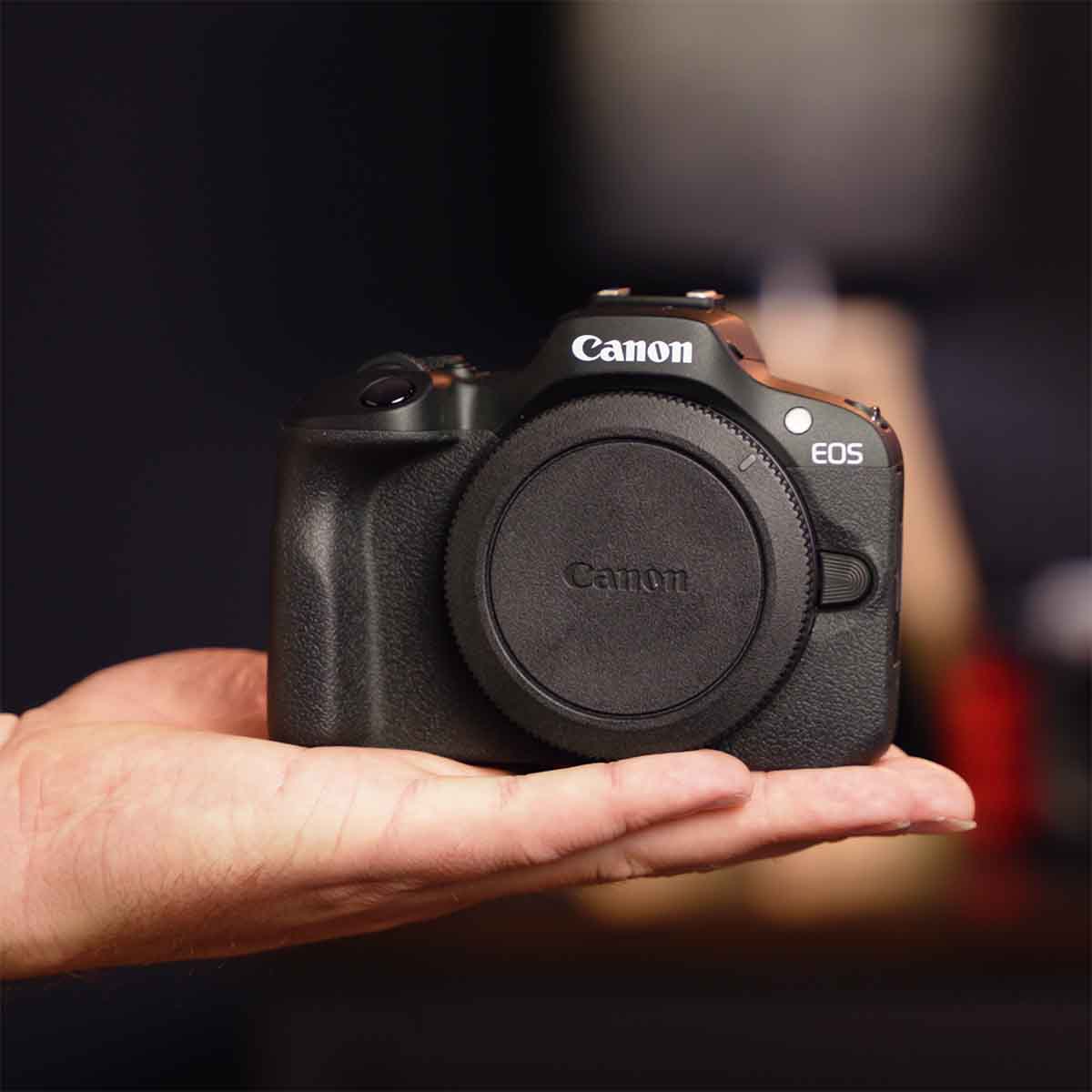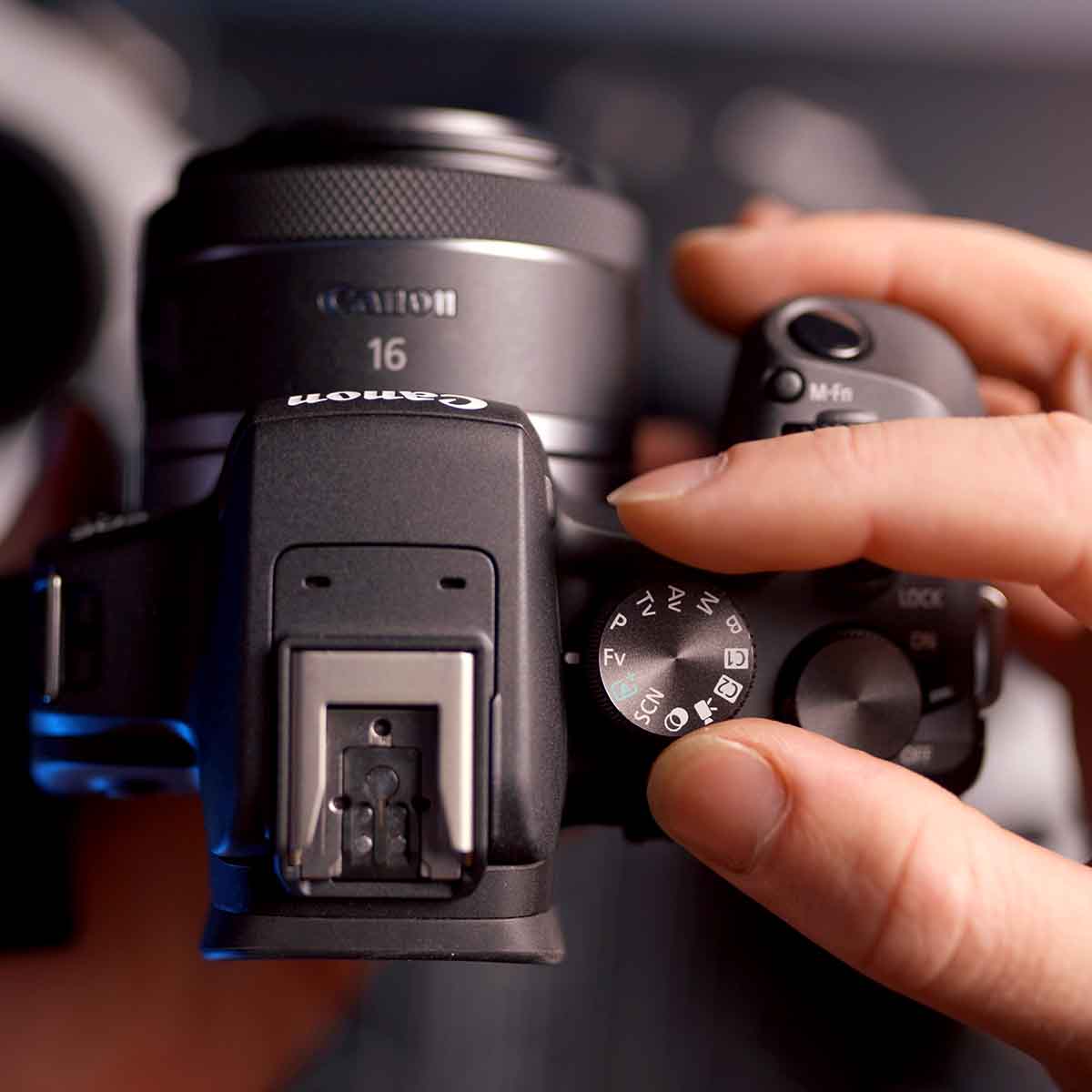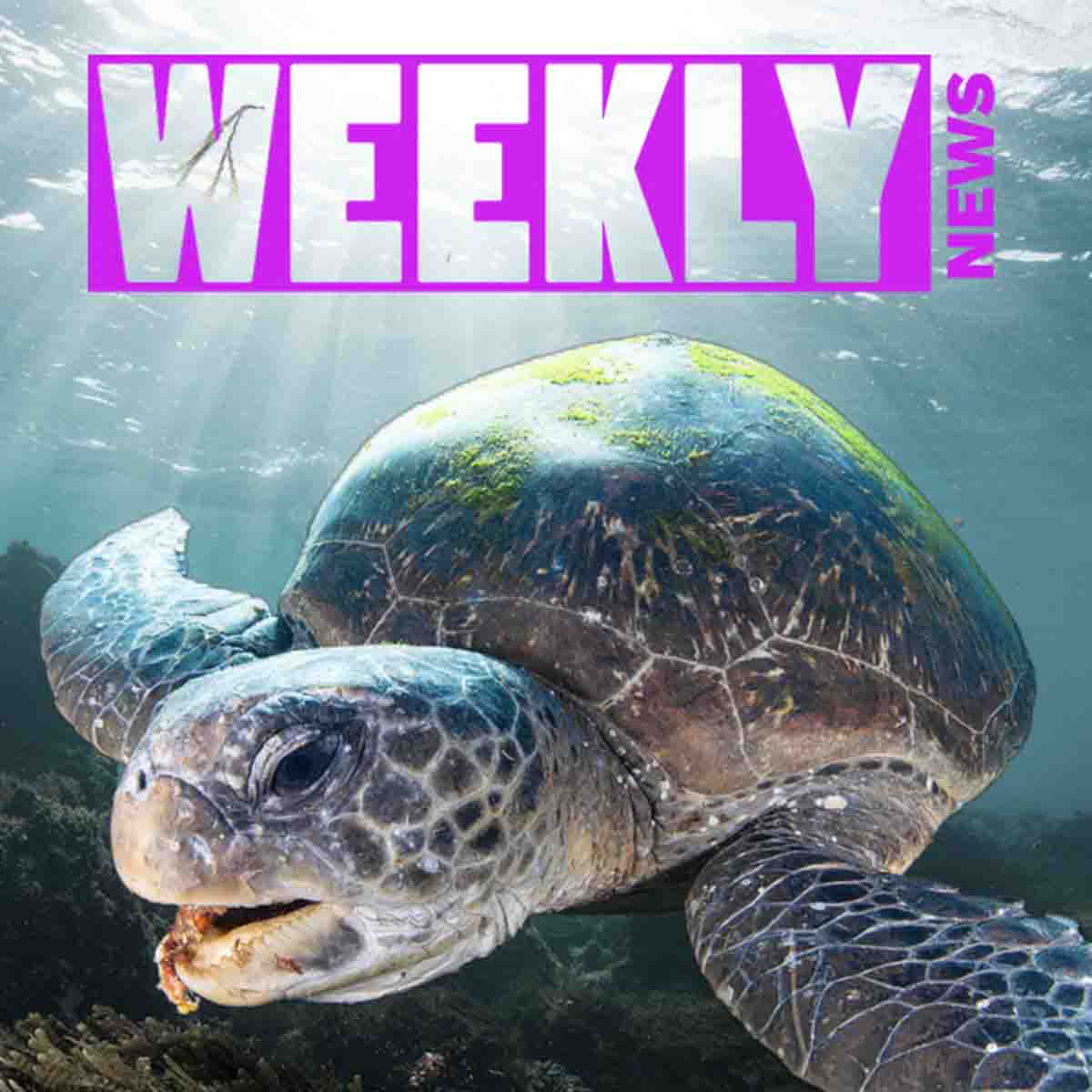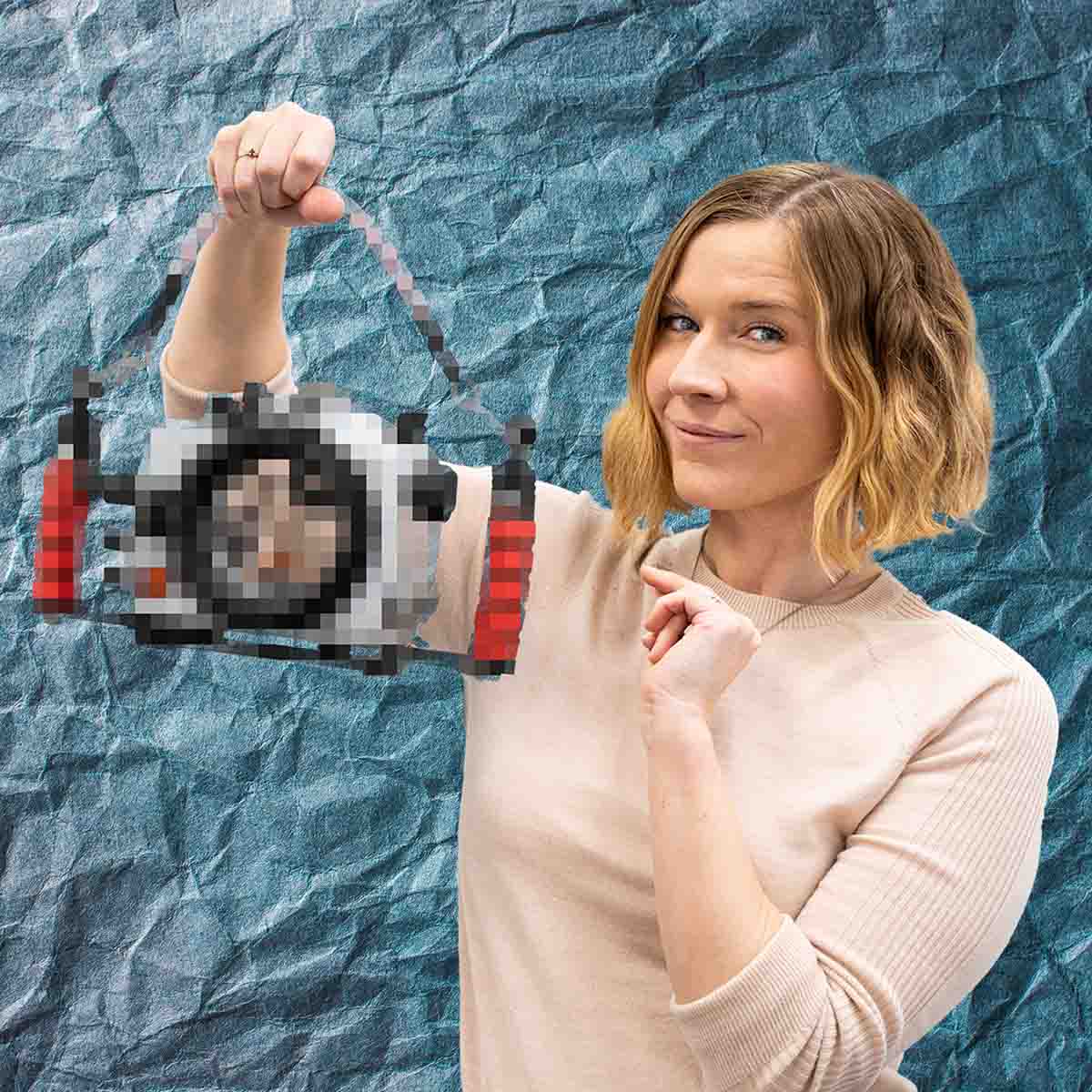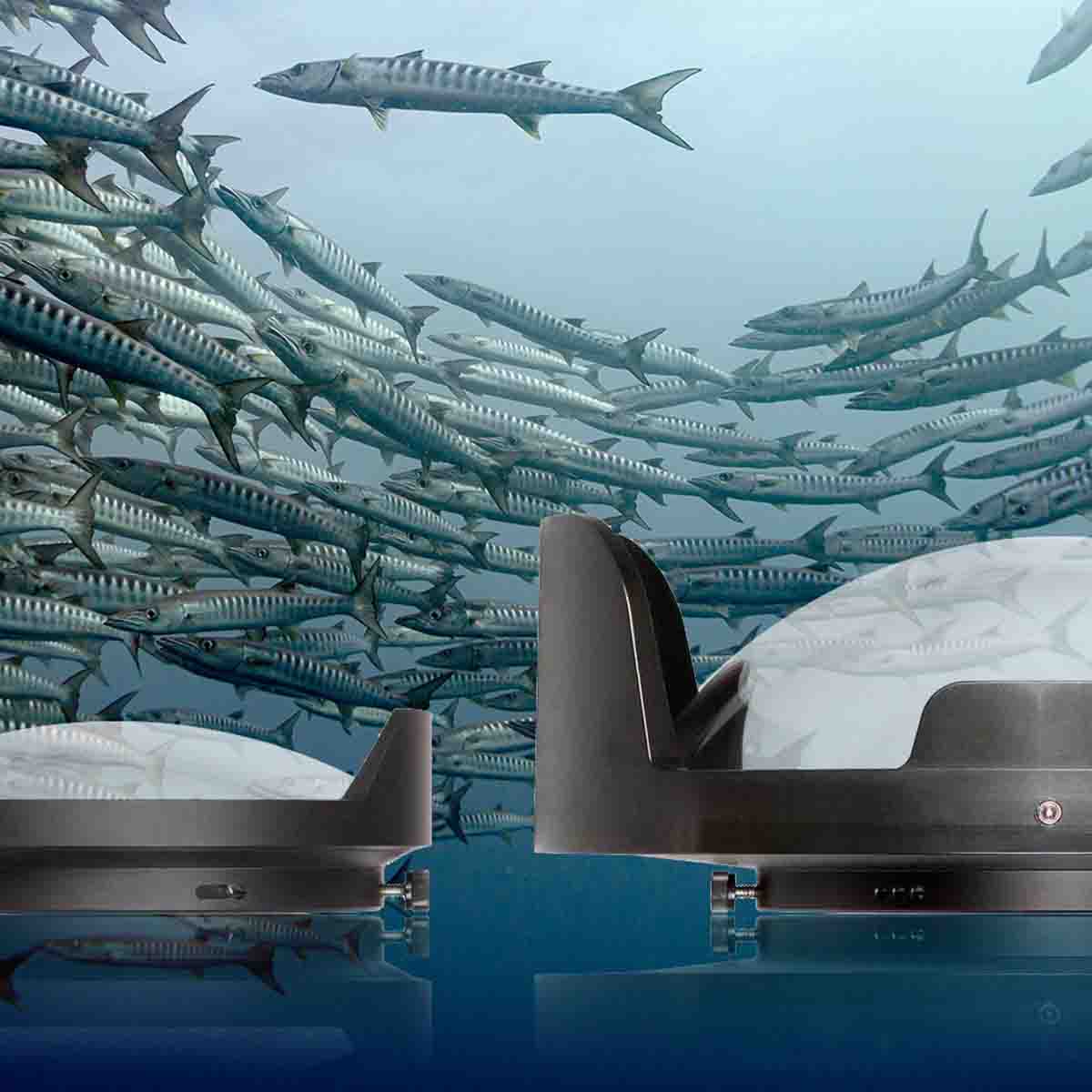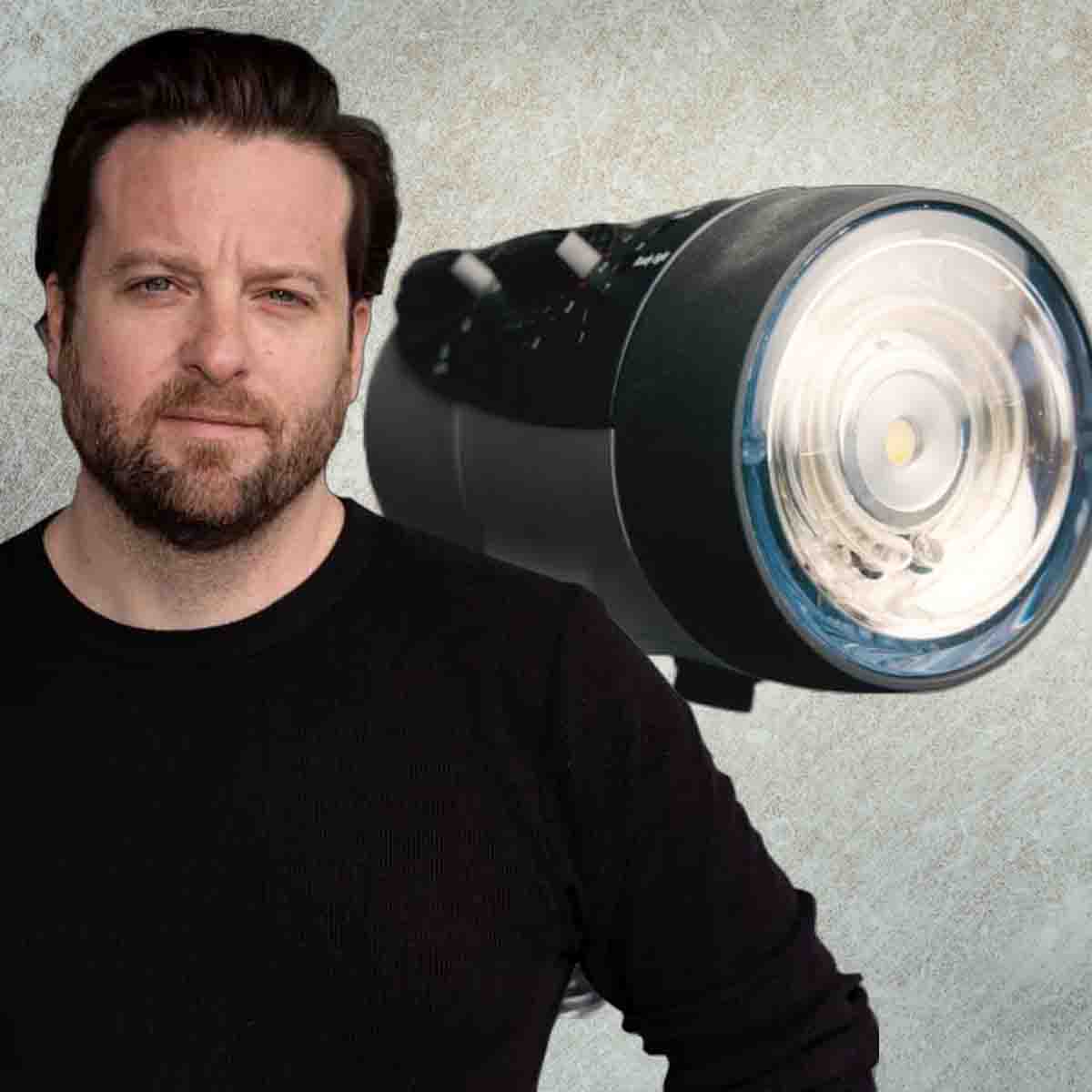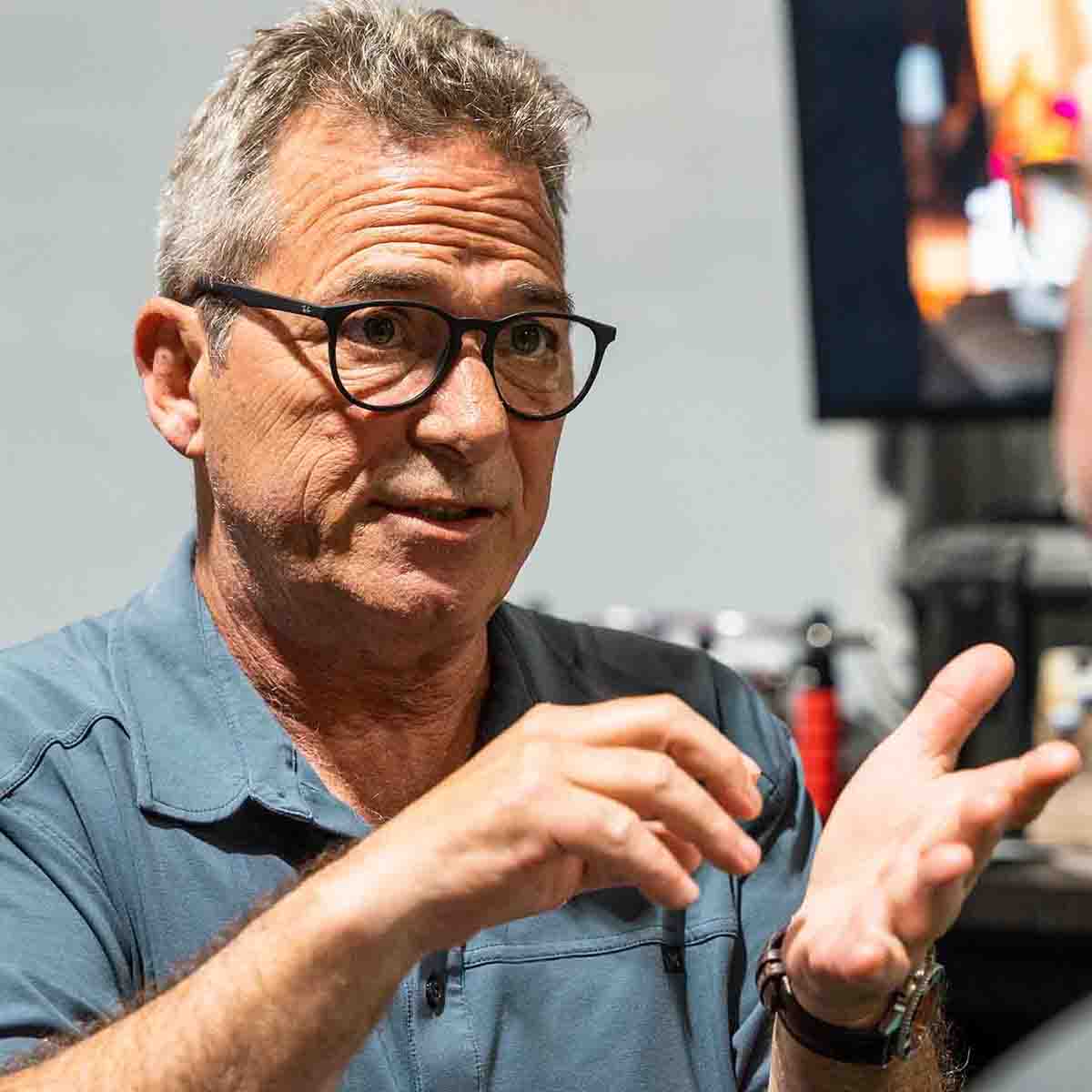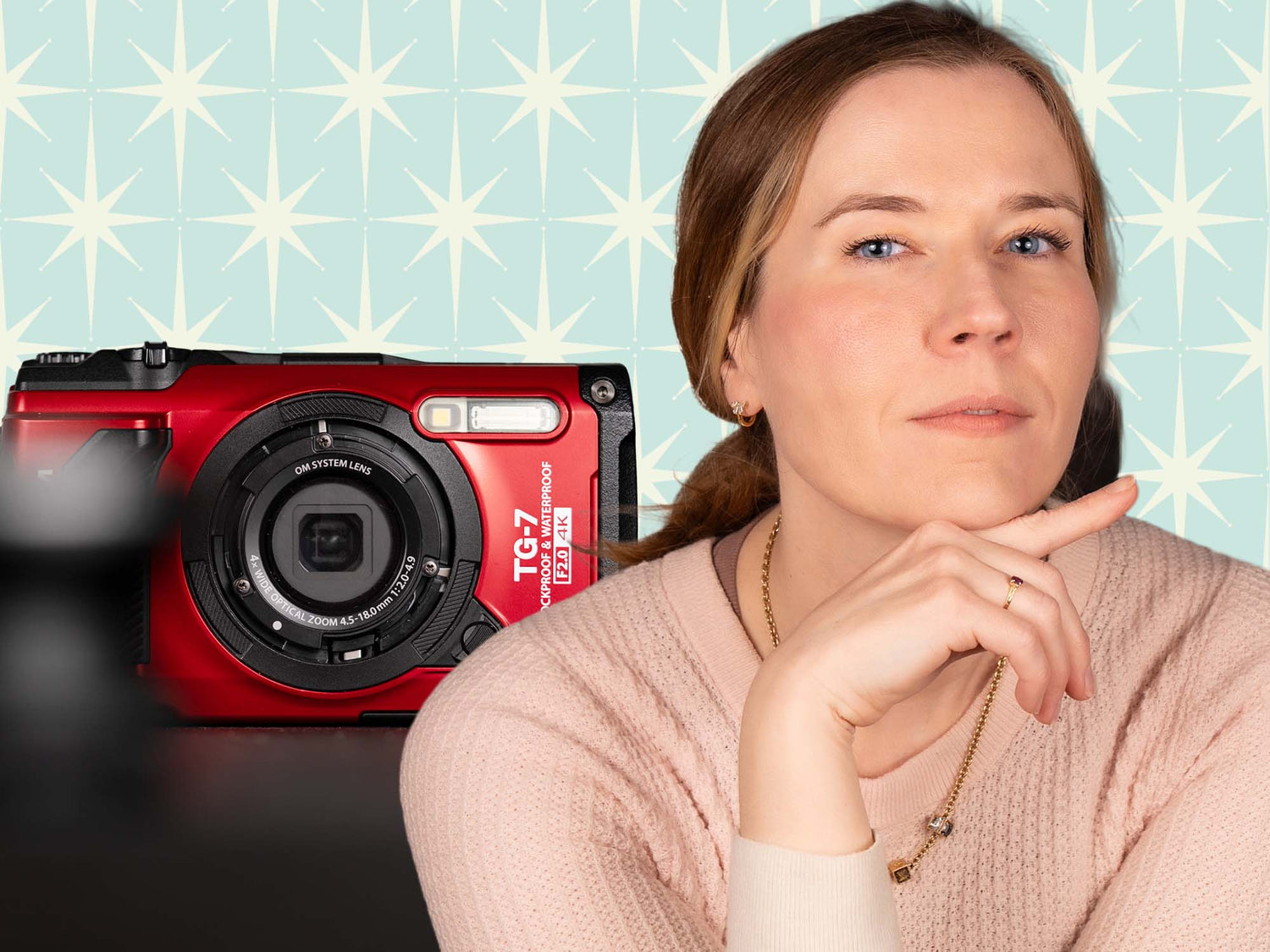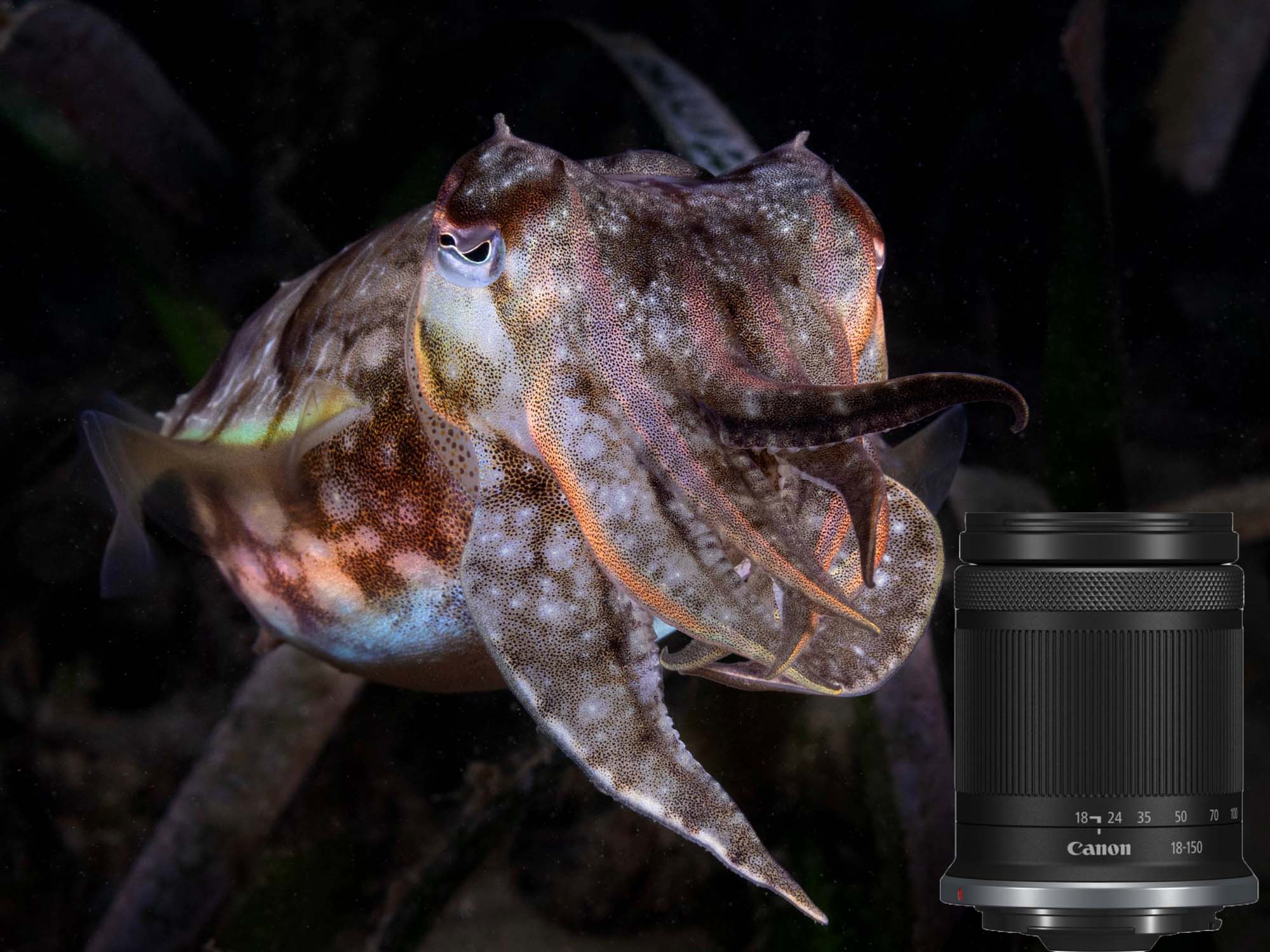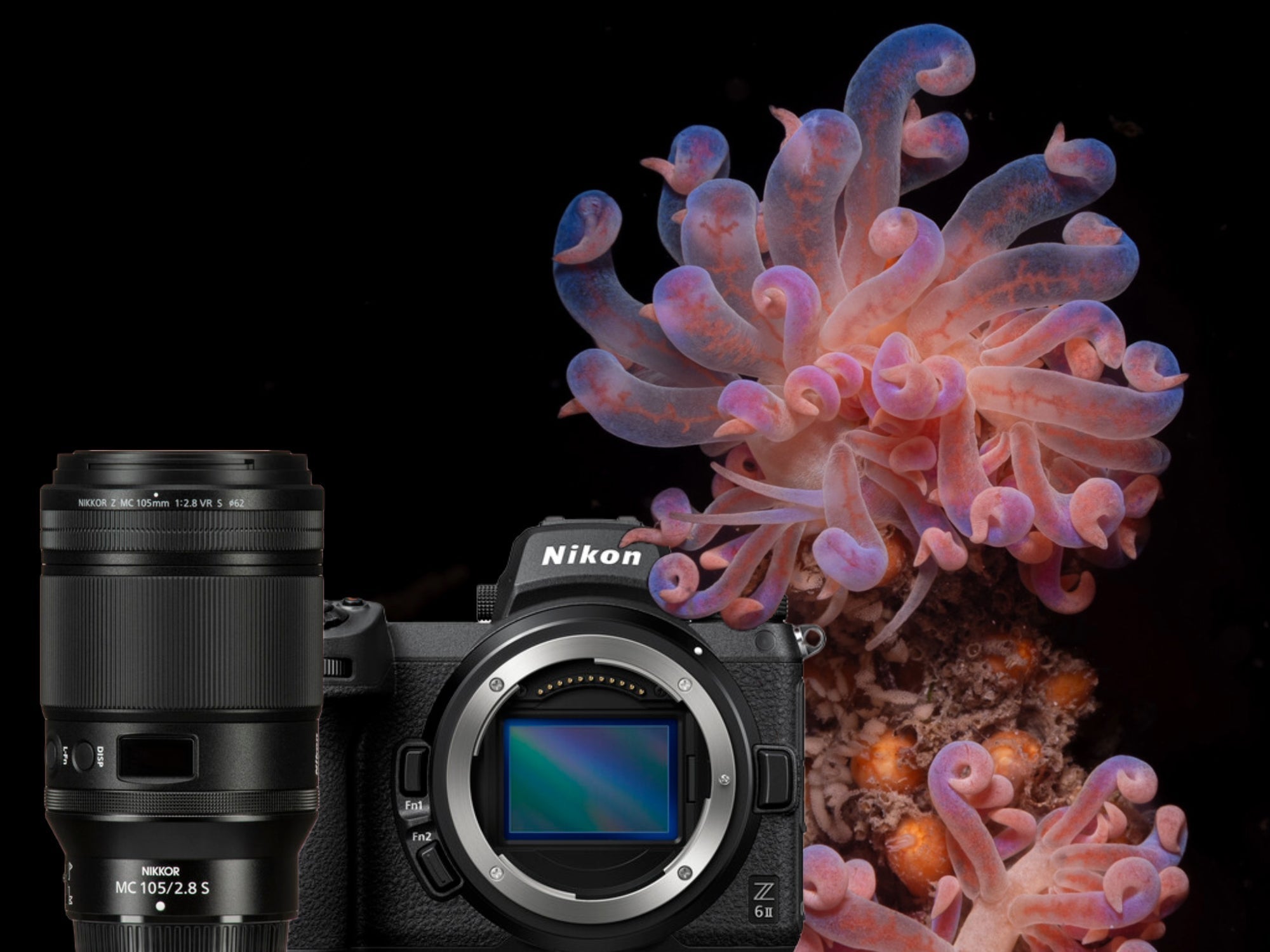Featuring Jean Rydberg
The OM System TG-7 and Olympus Tough TG-6 cameras are known as superb macro cameras thanks to their close focusing capabilities overall and particularly the Microscope mode. The final piece of the puzzle is a good ultra-wide angle option. And our favorite wide angle option by far is the FCON-T02 Fisheye Conversion Lens.
You'll love this lens for its compact size, ease of use, versatility - and most importantly - image quality. Let's dive into all of the things that set the FCON-T02 apart from other wide angle options on the market. Watch the video or scroll down to read the full video transcript.
Our Favorite TG-7 Wide Angle Lens
The TG-7 is known as a superb macro camera thanks to its close focusing capabilities overall and particularly the microscope mode.
The final piece to the puzzle is a good ultra wide angle option. And my favorite wide angle option by far is the FCON-T02 Fisheye Conversion Lens.
Wet Lens vs Dry Dome
Now, most underwater wide angle options for compact cameras attach to the outside of the housing. We call them wet lenses for this reason. While the FCON T02 is waterproof on its own, it is not a wet lens. To shoot it at depths beyond 65 feet (20 meters) you'll need to have a housing with a dry dome port. So let's talk about the difference between wet lenses and dry domes.

Have you ever heard of tennis elbow? What about wet lens wrist? Ikelite is the only housing the accommodates the compact and versatile FCON-T02 with a dry dome port, saving you from wrist fatigue and a host of other complications underwater.
Wet lenses are designed to have water between the front of a flat port and the back of a lens. But it's really easy to get these tiny bubbles trapped in there which will ruin your photos and video. A wet lens needs to be removed underwater to fill the gap with water and flush out any of the trapped bubbles. And I always have a little anxiety when I remove a wet lens underwater like I'm thinking I'm going to fumble it slightly and the lens is going to drop away like an anchor. But there's no such panic with the FCON lens and dome in place. Since the FCON dome is a dry fit to the housing before you get in the water, there's no need to burp the lens. You just chase the bubbles away from the front of the dome with a quick sweep of your hand and you're ready to dive.
Once you're underwater you can really appreciate the ease of handling a housing with the FCON lens inside. The housing is nearly neutral and well balanced. If you've shot with an external wet lens before, you know that they make a system really front heavy which is annoying when you're trying to set up a shot and it can wear on you after a couple of dives. Have you ever heard of tennis elbow? What about wet lens wrist? But, the buoyancy of the FCON is balanced so you won't have that problem when shooting the housing with a dome port.
Field of View
The wide field of view with the FCON in place is incredible as it goes up to a full 180 degrees. It's significantly wider than any wide angle lens on the market. The concept of the fisheye lens was designed to be as a fish sees and it lends itself to a more natural representation of underwater scenes. The fisheye lens is ideal for shooting large reef scapes, close focus wide angle, wrecks and big animals.
Now I'm not going to choose the FCON-T02 with dome port to shoot like pygmy seahorses or mating Mandarinfish but it's really satisfying in its ability to zoom in to shoot smaller subjects at roughly the equivalent of a 30mm macro lens.

Split shots reign supreme as far as wide angle underwater photos go, but they're hard to capture with most compact digital cameras. With the Ikelite FCON dome port you can have the best of both worlds. © Ikelite Underwater Systems
Split Shots
Now I'm particularly drawn to wide angle photos which give context to the scene and I think they're more relatable to most viewers, particularly non-divers. And I think the king of wide angle photography is the split shot. Half in, half out of the water, marrying traditional landscape with the underwater seascape. And this holy grail of shots tends to be incredibly difficult to capture with the TG-7, and most compact digital cameras, which are traditionally shot exclusively behind flat ports. It's virtually impossible to shoot a split shot with a flat port and next to impossible to shoot one with a wet lens.
The FCON lens makes it simple and even if you're not using the FCON attached to the camera, shooting the camera behind the FCON dome now makes it possible to shoot splits with the camera's native lens.
Other Features
So performance is my number one criteria when choosing the best wide angle solution and the FCON puts a big check mark in that box. But there are other things that I love about it.
It's lighter than an external wet lens which helps me stay within my tight luggage allowances. It also does double duty as a lens I can shoot on the surface for stunning vistas. And I can shoot it when snorkeling without a housing because like the camera it's independently waterproof.
Dome Port for FCON-T02
The FCON requires you to replace the flat port on your housing with a dome port. But the dome port doesn't limit you to only shooting with this accessory lens. Without the lens attached you're shooting the full equivalent zoom range of 25 to 100mm.

Get all the benefits of a wide angle lens with less drag, the TG-7 with FCON-T02 lens is the most compact, versatile, and lightweight system underwater today. © Steve Miller
Conclusion
So here’s the conclusion on the FCON T02 lens. Compared to a wide angel wet lens, it has so many advantages. It's wider, it's lighter, you don't have to burp it underwater. It's neutrally buoyant. It's the only option that lets you shoot split shots. You can use it on the land, you can use it without a housing, and you can use the camera behind the FCON dome port without the lens attached. This makes it the most versatile wide angle option for TG-7 and TG-6 cameras.
If you want to shoot the FCON lens, and I think you do, you'll have to pick up the Ikelite housing as it's the only housing that allows the flat port to be replaced with a dry dome port. You can buy the housing either with a dome port or with a flat port attached, and each port can be purchased separately if you want to switch back and forth between them.
If you're already shooting the FCON lens, check out our recommended camera settings, and also send us some of your shots. We would love to feature you on the Ikelite website. Thanks for joining me, and happy shooting!
Additional Viewing
OM System TG-7 Underwater Wide Angle Settings for FCON-T02 Fisheye Lens [VIDEO]
OM System TG-7 with FCON-T02 FISHEYE Lens! Ikelite Underwater Results from Cayman Islands [VIDEO]
First Look Olympus Tough TG-6 and FCON-T02 Circular Fisheye Lens
Wide Angle Fisheye to Macro on the Same Dive with the Olympus Tough TG-6
Circular Fisheye Showdown: Canon 8-15mm vs Olympus FCON-T02
Olympus FCON-T02 Circular Fisheye and Tough TG-6 Underwater Photos
 Jean Rydberg is the President & CEO of Ikelite. She has lived her whole life in landlocked Indianapolis, Indiana, but is no stranger to the water as a daughter of Ikelite’s founder Ike Brigham. She has traveled around the world shooting and testing gear and enjoys new challenges in both photography and diving. Jean loves to learn about the creative ways photographers achieve their visions. More than anything she wants to show aspiring underwater photographers that excellence is attainable with any system. When she's not working she's spending time with her husband and two daughters.
Jean Rydberg is the President & CEO of Ikelite. She has lived her whole life in landlocked Indianapolis, Indiana, but is no stranger to the water as a daughter of Ikelite’s founder Ike Brigham. She has traveled around the world shooting and testing gear and enjoys new challenges in both photography and diving. Jean loves to learn about the creative ways photographers achieve their visions. More than anything she wants to show aspiring underwater photographers that excellence is attainable with any system. When she's not working she's spending time with her husband and two daughters.

